Llanymynech, meaning "church of the monks", is on the border of Shropshire and Powys - the border actually ran directly through The Lion pub, so that when pubs in Wales were closed on Sundays ('dry'), only two-thirds of the pub could serve alcohol. It also has the only golf course in the country to straddle two countries. But you probably don't want to know about that!
^ the village and surrounds from the quarry.
The reason I visited is as follows.
Llanymynech has one of three surviving Hoffmann Kilns in the UK, and the only
one to have a chimney still standing. This is a very important site, which I shall explain in the fullness of time...
Llanymynech is rich in history dating
back possibly to the late Bronze Age, with one of the largest hillforts in the
UK (now largely taken up with the aforementioned golf course). There is also a Roman copper mine and numerous moated sites dotted around.
Nobody can tell exactly when limeburning began at Llanymynech, although a
reference from 1754 states there were "a great number of limekilns"
here. The nearby limestone quarry, together with an abundant supply of coal
from the Ruabon, Oswestry and Chirk Coalfields made it a hive of activity
during the second half of the 19th century - it was the increase in use of
Portcastle Cement at the end of the century that most likely contributed to
Llanymynech Kilns closing down in 1914, a story repeated up and down the limeburning country.
Prior to the Montgomery Canal being
constructed between 1794 and 1821, lime would have been burnt on a small scale.
With the canal network opened up a massive new market and so the kilns at
Llanymynech grew accordingly.
^ the canal wharf at Llanymynech.
The limestone quarry is now Llanymynech
Rocks nature reserve, a very pretty place that put me in mind of the beginning
of Indiana Jones 3, when the scouting exhibition is going through Utah or
wherever they are. It's quite a staggering site, to climb the track incline and
suddenly have the eyes assaulted with the mass of jagged quarry workings,
particularly on a sunny day, with the rock almost glowing and
dramatically set off by the blue sky. Yes, I'm waxing lyrical.
Eternally mindful of the dangers of
disused quarries, I nevertheless wandered around with unabashed awe (to the
extent that, nearly five hours later, I've still got neckache from craning up
to look at the rugged tors of rock... ahhh, there I go again).
The whole site just looks so
impressive, doubly so because it hasn't flooded like a lot of other quarries tend to, being as it is halfway up a
mountain, rather than at the bottom of it. Very impressive, anyway!
I succeeded neither at finding the
Roman copper mine or the hillfort, from where Caractacus was meant to have made
his last stand. Instead, I found the most incongruous site I could think of,
rounding the corner from scrubland and thorn bushes growing from the dislodged
rock and muddy footpaths was Llanymynech Golf Course, mentioned above. All
manicured green grass and flying balls, why anyone would want to play golf at
such altitudes I don't know - what if you hit your ball too hard and it plunges
to the bottom of the cliff? Do you halt play for the next hour or so while you
try to find it again? Bleah.
Anyway, I found the whole experience of wandering
the edges of the outcroppings a little vertiginous to say the least, so I
wasted little time in retracing my steps into the quarry and back to the
Heritage Area around the Hoffmann kiln...
^ The kilns surviving at the edge of the
quarry workings.
While the quarry itself contained lime
kilns, a pair of trackways was constructed in 1837 which brought the lime to the kiln
bank ready to be transported by canal. Each of these trackways had at its head
a Drum House to control the descent, and so as more of the quarry was worked
new Houses would have been built to decrease the transport within the quarry.
^ one of the drum houses, I think it might be the western, or "Welsh", one.
^ the restored eastern, or "English" drumhouse.
At the foot of the incline, before the carts got to the Limeworks, there was
also a Weighbridge built at Tally House, presumably to get figures for the production of lime
at the Works.
The whole area here is criss-crossed with old rail tracks, often confusing the issue as to where the carts were going:
Llanymynech Limeworks began on the
large-scale with two massive vertical draw kilns. I've visited kilns dotted around the
place that are fairly large, and indeed there is a bank of draw kilns
at Minera that are fairly extensive, but these two at Llanymynech are monsters,
particularly given how the entire building is just one kiln. As was usual, they
are top-fed with a draw-hole at the front for slaking out the lime.
The Hoffmann Kiln was the last
construction at the site, sometime around 1900. The Hoffmann Kiln was patented
in Danzig, Germany in 1858 by Friedrich Hoffmann, and was designed for baking
bricks. The idea was for having a continual fire inside (the design is sometimes referred to as the "Hoffmann Continuous Kiln") and pallets of bricks
were placed inside each "room" and baked as the firing wagon passed.
They were then removed and re-stocked while the wagon baked some more, and so
the process went. 'Non-developed' countries still use the design for
brickmaking, with kilns in Iran on a continual fire for 35 years (according to our friend, Wikipedia).
It wasn't long before the design was
used for burning lime, with the English Patent by Humphrey Chamberlain filed in
1868, shortly after which he built a kiln at the Meal Bank Quarry, in Ingleton,
North Yorkshire. The first kilns were round as per Hoffmann's initial design, but later an elliptical rectangle
was used, as the Llanymynech kiln was.
Size was dependent on the strength of
the industrial area: Llanymynech has 14 chambers, so that at any one time: one
was empty, one was being filled, five were pre-firing, two were being fired,
four were cooling and one was being emptied.
To the left of the chamber
doorways are flues to feed the firing course within the kiln, all of which lead
to the 42.5m chimney.
The Hoffmann Kiln as designed in
Germany fed off petroleum or natural gas, but coal was still used to channel
the fire around the kiln: when one chamber is sufficiently fired its flue was
closed and the next opened, with the coal bringing the fire into the next
chamber.
There were holes in the roof where the charcoal was fed ("charged") into the kiln,
and so it was covered with a corrugated iron roof. The original roof has
long gone but a new covering has been provided when the Heritage Area was created by the local authorities and CPAT. Marvellous!
^ no, that's right, there really are lots of 'metal men' dotted around the site - this one in particular really freaked me out when I first came back and saw him!
I must admit, I have no idea how many lime-burning Hoffmann-style kilns there were in Britain during the industrial heyday, but now there remain just three: at Staylittle, in Yorkshire; at Minera, near Wrexham; and here at Llanymynech (as stated above, however, Llanymynech is the only one with the chimney intact).
Despite the exhausting climb to the top
of the quarry, and the battering winds that threatened to blow me the entire
225m back down to sea level, I thoroughly enjoyed the whole experience and can
heartily recommend going to Llanymynech to anyone who will stand still long
enough to listen to me!
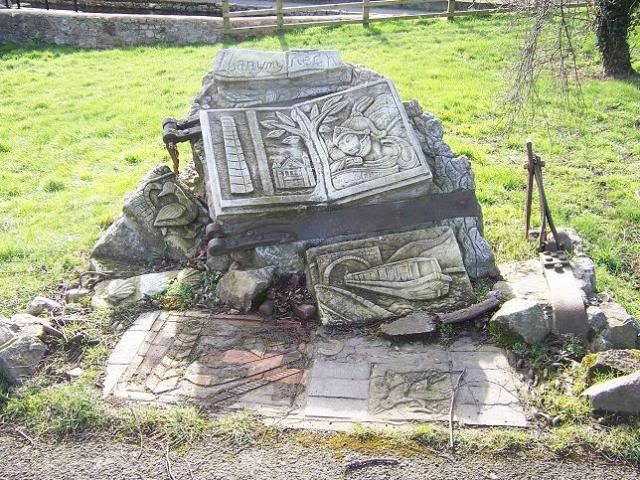


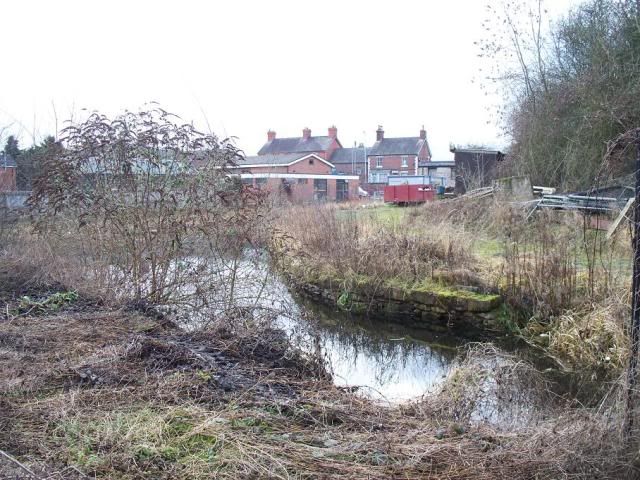
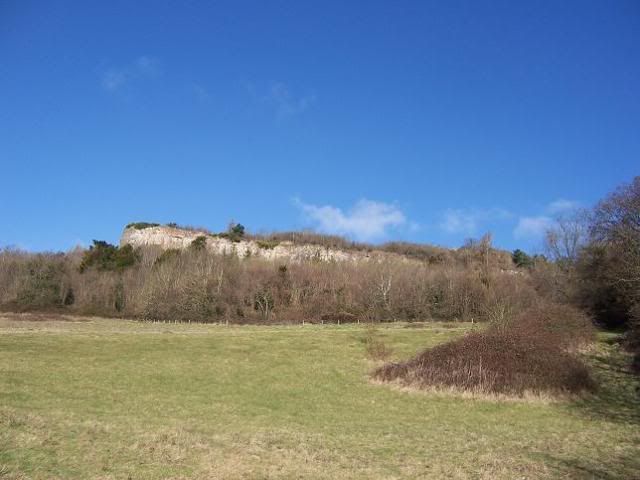
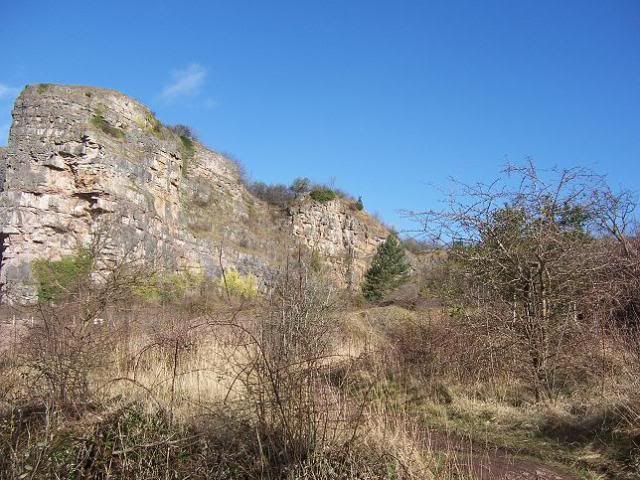

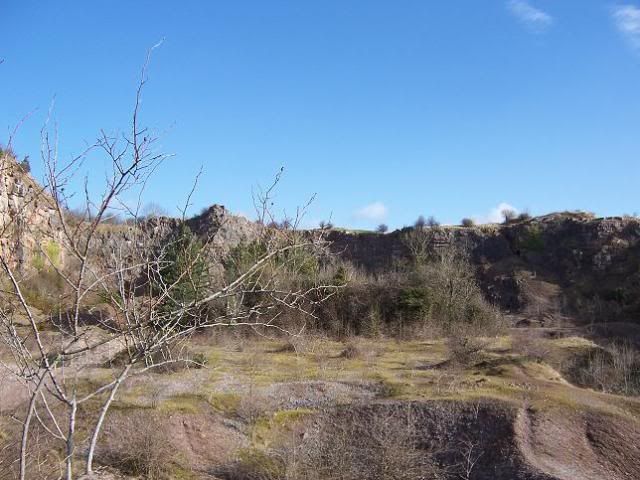
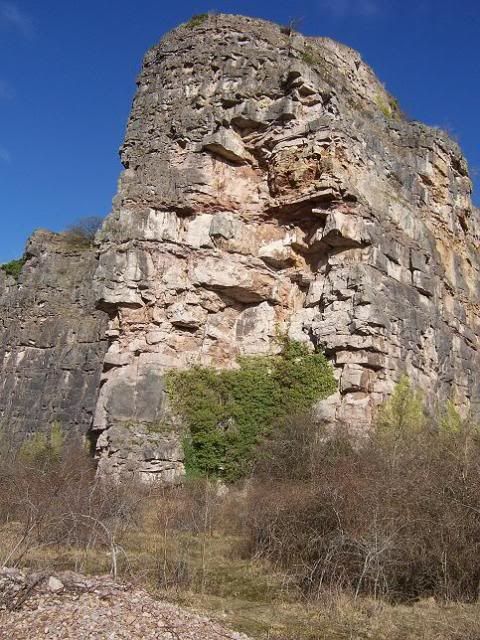



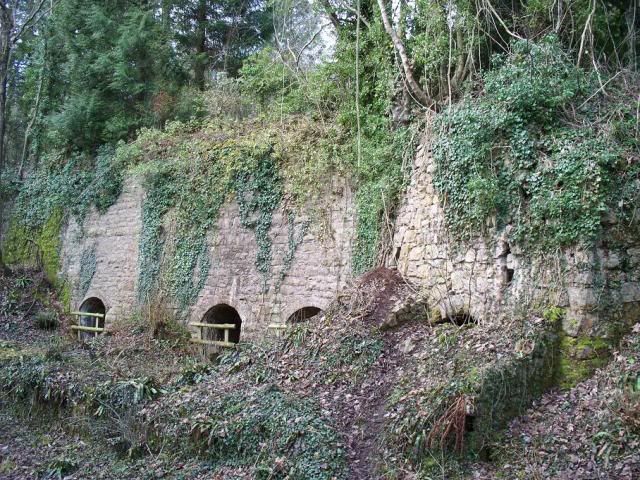
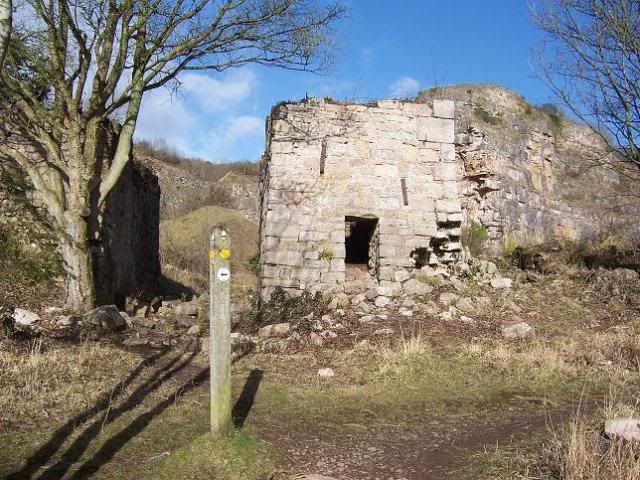

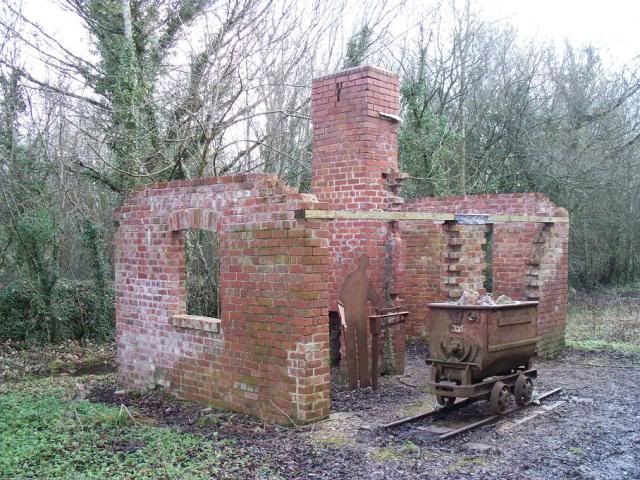
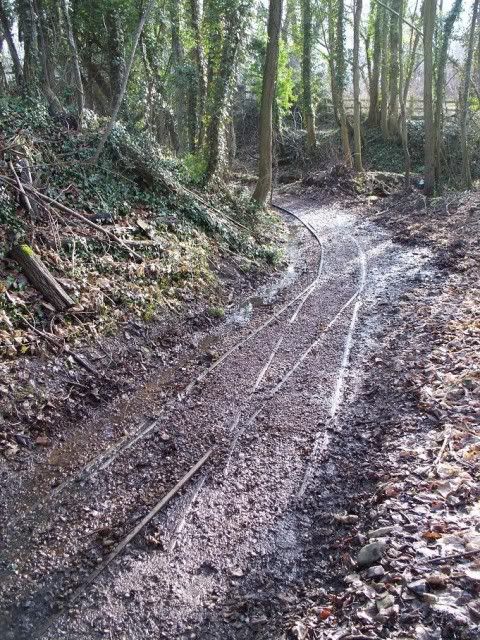

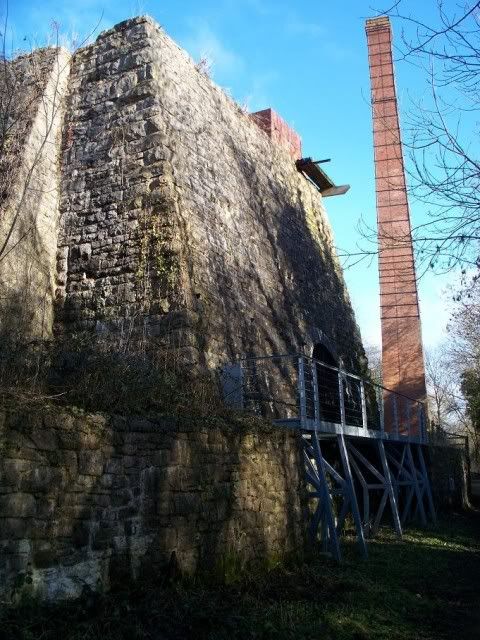
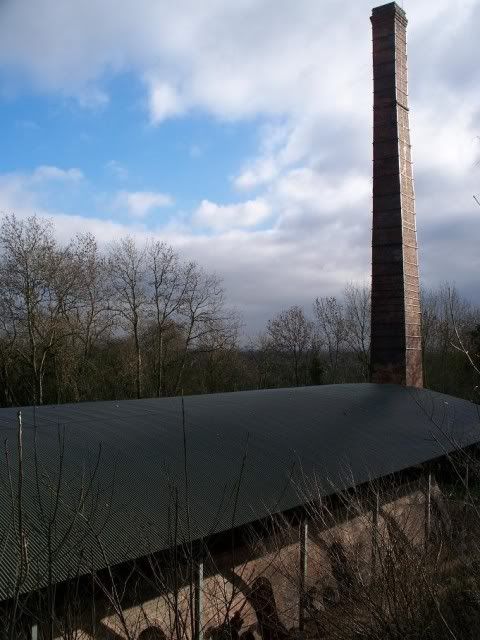
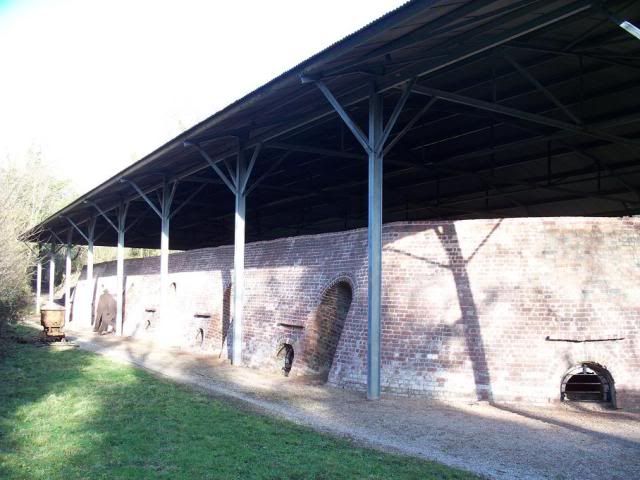
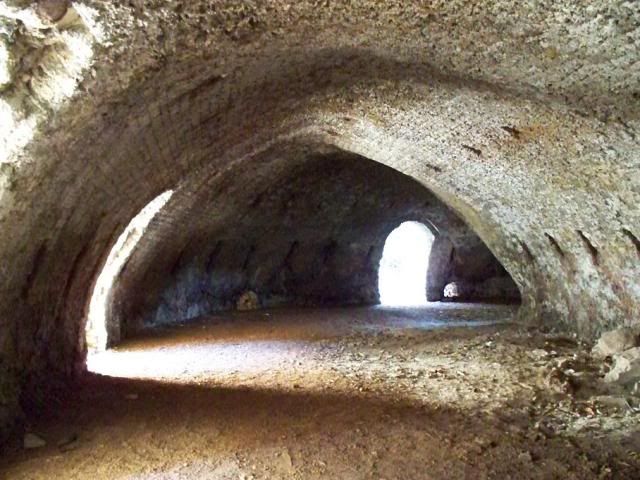
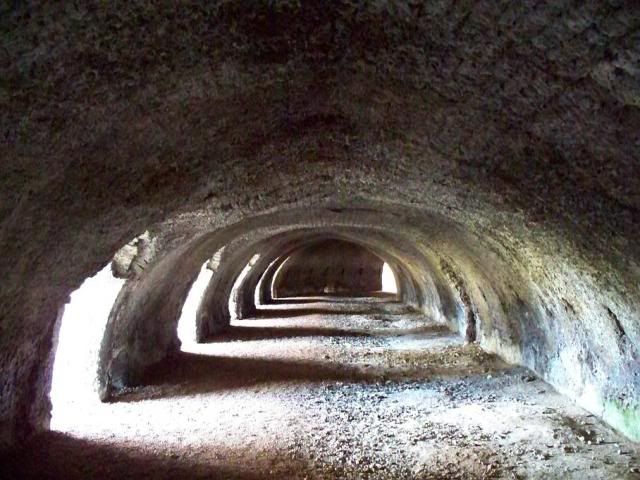
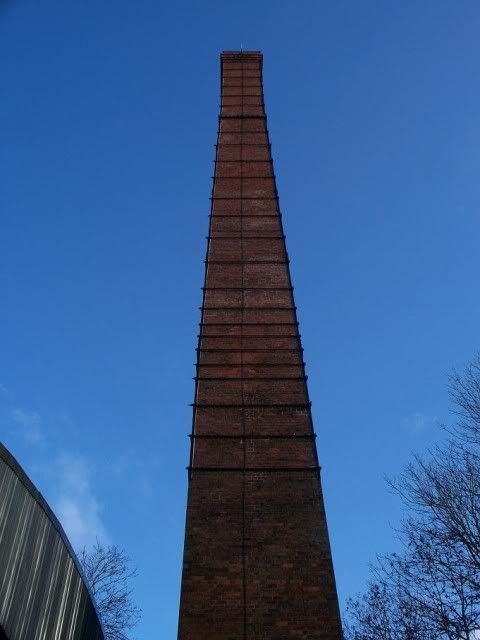
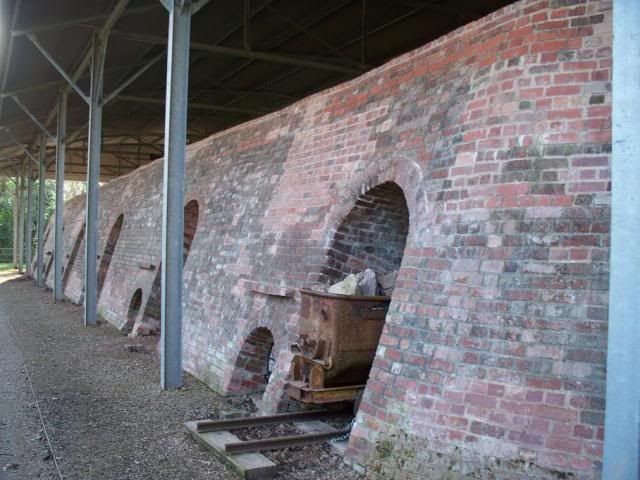

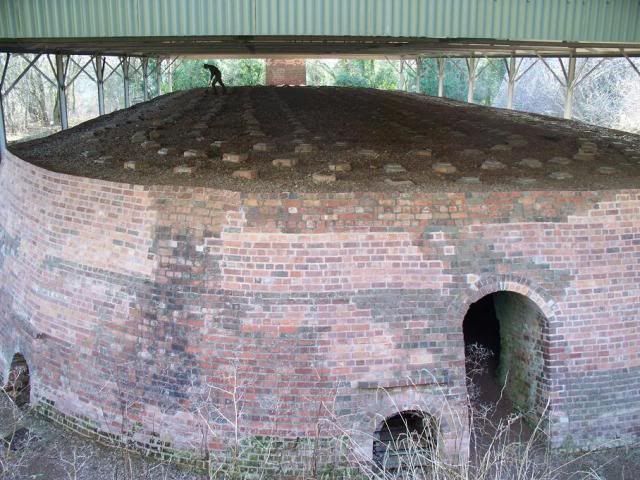
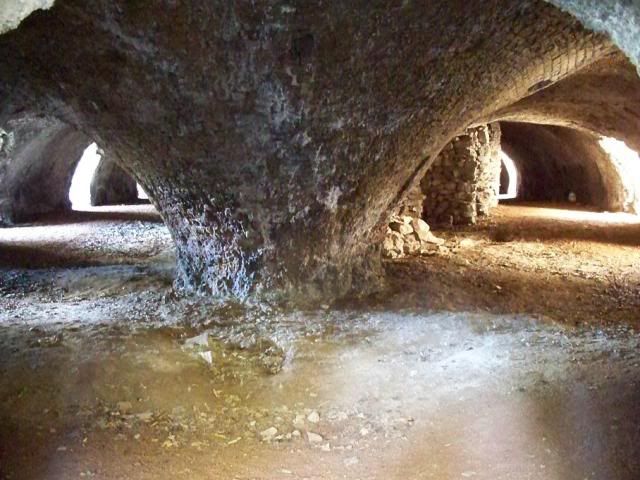
hi enjoyed my read with you found some answers for my research / please can i offer up knowledge of a place i know all is needed are some good wellies , heading from wrexham to mold take a left after the railway bridge for the frwdd , as the frwdd pub is in front park in the car park opposite , visible at the edge of the car park there is a stream follow down stream , there will be a large bridge on top of the bridge to the right is a forgotten furnace hope this is of interest to you marrrkusss
ReplyDelete